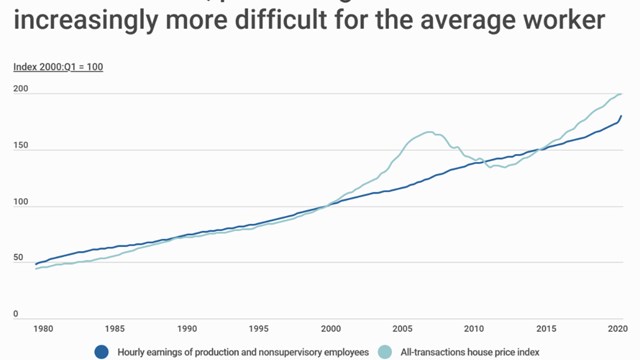First of a two-part series; read part two here.
For the 225,000 commuters who normally take the L train from Brooklyn to Manhattan, April 27, 2019 would have been doomsday. On that date, the MTA was supposed to have completely shut down L train service between the two boroughs in order to make much-needed repairs to the Canarsie Tunnel, which was damaged by Superstorm Sandy in 2012. The renovation was scheduled for 15 months. First announced in 2016, the rehabilitation plan would have necessitated additional subway service on other neighboring subway lines as well as alternate forms of transportation such as buses and ferries.
But then on January 3, New York Gov. Andrew Cuomo made the stunning announcement that he was halting the scheduled full L shutdown, opting instead to go with an alternative plan recommended by a group of engineering experts that included rehab work to be done on nights and weekends through the use of new technology. He said in a statement that this new plan “would be faster, better and probably less expensive.” (This past Tuesday, the MTA board held an emergency meeting to discuss Cuomo’s new plan, which would involve another way of mounting cables in the tunnel).
Before Cuomo's surprising reversal, talk of a shutdown not only had residents in Williamsburg and parts of North Brooklyn preparing for the worse, but also raised questions about real estate values in those affected areas. From all the brouhaha generated, it appears that renters emerged as the huge winners. Streeteasy reported last August that landlords with properties along the L train offered lower rents as incentives to tenants. And according to another Streeteasy post from last week, those tenants who signed leases for homes in North Brooklyn last year saved an estimated total of $26.5 million in rent.
Meanwhile, some local real estate professionals offered views on Cuomo's announcement and the the original shutdown plan’s impact on apartments sales prices. Gary Malin, President of Citi Habitats, tells The Cooperator that suspension of the full shutdown would not only benefit the commuters but also real estate in the areas served by the L line, including Williamsburg. “Owners that were being impacted on the L train line were clearly making concessions necessary for tenants,” he says, “and those tenants understood what sort of bargain they were getting. [Cuomo’s decision] sort of takes away this sort looming anxiety that would certainly preoccupied a lot of people's minds.”
“Very few things have ever surprised me as much as this announcement did,” says Warner Lewis, an agent for Halstead. “There is no better news that could have come this year for sellers or landlords than the L shutdown being--well, shut down.”
Jessica Peters, an agent for Douglas Elliman, says she wasn't surprised by the governor's about-face, but rather how it came late in the game. “The L closure announcement in 2016,” she says, “coupled with a nationwide market decline, caused more severe price cuts and rental concessions in Williamsburg across the board. In my opinion, the damage has been done. I believe it will take eight-12 months for the market to correct itself. There is an immediate sign of relief for rentals but it will take a little time for the sales market to adjust.”
When the L shutdown was first announced back in July 2016, the change in apartment pricing in Williamsburg wasn’t that instantaneous at the time, according to Malin. “It was more like a punch in the stomach,” he says, “and ‘let's see what's going to happen.’”
Lewis also echoes that sentiment. “For the first three month after the announcement,” he says, “there were no changes as buyers who were already mentally committed to the neighborhood went through with their purchase. After these buyers, there was no next set. The market completely froze, and the winter of 2016-17 was a disaster for sellers with prices down as much as 20 percent from the pre-L train news highs.”
Peters adds that when the July 2016 announcement was made, there was a period of uncertainty over when the rehab work would exactly take place "There was definitely some pause," she says. "Once they made it definitive [last October] that they were going to shut it down for 15 months,” she explains, “we saw about anywhere between a 10 percent and 20 percent drop in all of our exclusives in prime Williamsburg, like [on the] waterfront. The Edge [a luxury condo complex in Williamsburg] specifically saw some major reductions. We started to see a little bit of a bounceback over the last year-and-a-half, and maybe about four months ago it started to really slow down again to the point where there weren't too many sales going on.”
Garrett Derderian, Director of Data and Reporting at Stribling & Associates, says that prior to Cuomo’s announcement, prices in North Brooklyn fell at a greater rate than the rest of the borough. He explains: “In the fourth quarter of 2018, North Brooklyn was the only market in the borough where the median price, average price, and average price-per-foot all declined. The discount in North Brooklyn, at 8 percent, was also the highest in the borough, which averaged 5.6 percent in Q4. In the three other submarkets, we saw sales prices increase or remain relatively flat, further showcasing the divergence of the North Brooklyn market. This trend was also true in the third quarter of 2018.
“When the exact date of the shutdown was announced [in October 2018],” Derderian later says, “we saw a noticeable increase in the average discount in this market. In Q4 2018, the average discount in North Brooklyn was 8 percent. That was the highest discount rate from Q3 2016 to Q4 2018. From Q3 2016 to Q3 2018, the average discount was only 4 percent. Buyers who purchased during Q4 2018 certainly got good deals, compared to the market at-large.”
While the then-impending L shutdown played a role in apartment pricing for North Brooklyn, Michael Salvatico, a vice president at Marcus & Millichap, offers that the price reductions is likely linked to a downturn in the market, “the actual economics and the over-supply of the market more so than the L train, It can be misread as an issue with the L train, but really it's just because the market is overall down. From what we're experiencing in terms of development sites and land sales, the pricing hasn't really changed because of the L. It's the economics, really.”
With the full shutdown now halted for the time being, what does it mean for the residential market in North Brooklyn going forward? Does the leverage go back to the landlords? Is it still a buyer’s market? The aforementioned real estate experts quoted here will tackle those questions in the next installment of this story.
Read part two here.
David Chiu is an associate editor of The Cooperator.







Leave a Comment